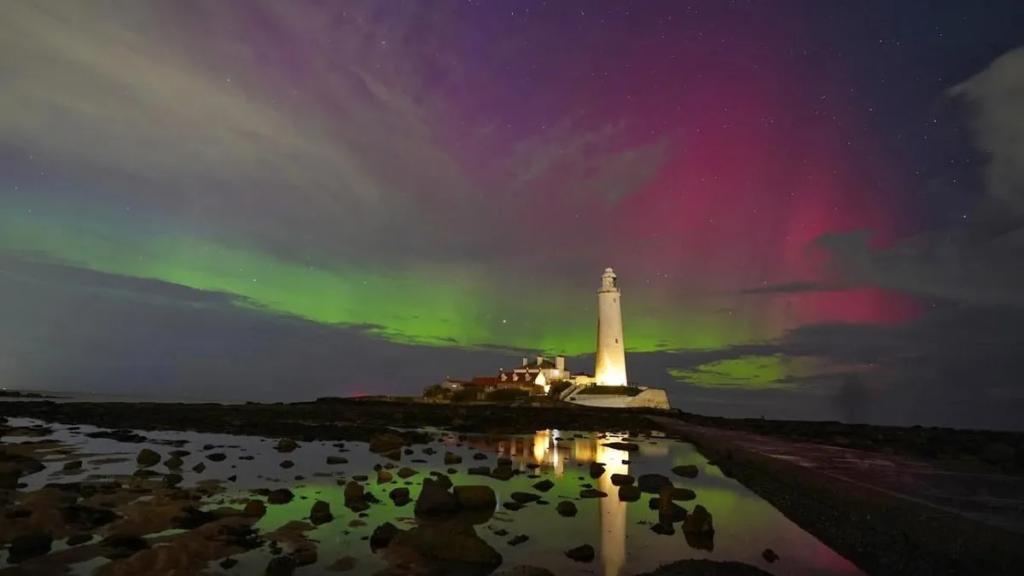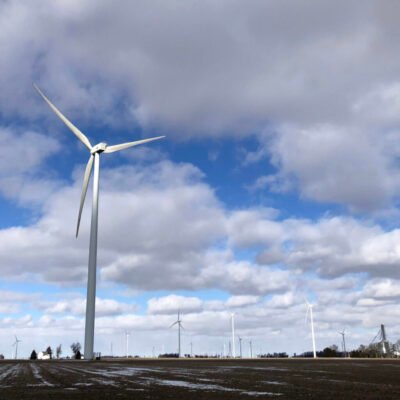The Aurora Borealis, or Northern Lights, is one of the most breathtaking natural phenomena on Earth. Known for its vibrant and shifting colors that light up the night sky, it has long captured the fascination of stargazers, photographers, and nature enthusiasts. While traditionally associated with regions closer to the Arctic Circle, including countries like Norway, Sweden, and Canada, the Aurora Borealis is occasionally visible in places much farther south — including Indiana.
Though Indiana is not typically known for frequent sightings of this dazzling light show, there have been rare occasions where residents have been lucky enough to witness the ethereal glow of the Northern Lights from their own backyards. In this article, we will explore what the Aurora Borealis is, how it can sometimes be seen in Indiana, and tips for spotting this magnificent light display.
What is the Aurora Borealis?

The Aurora Borealis is a natural light display that occurs when charged particles from the Sun interact with Earth’s magnetic field. These particles, often referred to as solar wind, travel millions of miles through space and eventually collide with atoms and molecules in Earth’s atmosphere. When these collisions occur, energy is released in the form of light, creating the colorful dancing waves in the sky.
The colors of the auroras are determined by the type of gas the particles are interacting with. Oxygen atoms, for example, produce green and red colors, while nitrogen molecules emit purple and blue hues. The most common color associated with the Aurora Borealis is green, but the full spectrum can include hues of red, yellow, blue, and purple.
The Northern Lights are typically seen in the high-latitude regions of the world, near the Arctic Circle, in areas like Alaska, Canada, and Scandinavia. These areas are closer to Earth’s magnetic poles, where the auroral activity is most intense. However, during periods of high solar activity, such as during solar storms or solar maximum (when the Sun’s activity is at its peak), the Aurora Borealis can extend further south, making it possible to view this phenomenon in places like Indiana.
Can You See the Aurora Borealis in Indiana?
While Indiana is not within the typical “Aurora Belt” where the Northern Lights are most commonly visible, the state has experienced a few rare sightings of the Aurora Borealis. These sightings tend to happen during periods of increased solar activity, which can cause the auroras to travel farther south than usual.
Historically, Indiana has been fortunate enough to witness the Aurora Borealis during times of heightened solar storms. For instance, in March 1989, a massive solar storm caused the auroras to be visible as far south as the northern United States, including parts of Indiana. The same phenomenon occurred during the solar maximum of the 2010s, with the Northern Lights visible on a few occasions in the state.
While these sightings are rare, they do happen with some regularity. Typically, the best chance of seeing the Aurora Borealis in Indiana occurs during periods of solar maximum, which happens approximately every 11 years, as well as during solar storms or high geomagnetic activity. It is important to note that these events can be unpredictable, making it a bit like a cosmic lottery — but with a little preparation, Indiana residents can improve their chances of catching a glimpse.
When is the Best Time to See the Aurora Borealis in Indiana?

While the Aurora Borealis can theoretically be seen at any time of year, there are a few factors that increase the likelihood of seeing the lights in Indiana:
- Solar Activity: As mentioned, solar maximum and solar storms are the main drivers of increased auroral activity. Monitoring solar forecasts and geomagnetic activity can provide a better idea of when to expect a potential sighting. Websites and apps like the NOAA’s Space Weather Prediction Center or the Aurora Forecast app can help keep track of solar activity.
- Clear, Dark Skies: The best time to view the Aurora Borealis is during the winter months, particularly in the late evening or early morning hours. Indiana’s relatively dark skies away from urban light pollution provide an excellent opportunity to catch a glimpse of the aurora, though you’ll want to be in a rural or secluded area for the best viewing experience.
- High Geomagnetic Activity: Geomagnetic storms occur when solar wind disturbs the Earth’s magnetosphere, increasing the chance of auroras being visible farther south. These storms are usually unpredictable, but they can cause the aurora to be visible across parts of the northern United States, including Indiana.
- Locations in Indiana: Some of the best spots for viewing the Aurora Borealis in Indiana are in areas with minimal light pollution. These places include rural locations in the northern part of the state, such as around Lake Michigan, as well as in parks or open fields far from city lights. Some state parks in Indiana, such as Brown County State Park and Tippecanoe State Park, are popular for stargazing and could provide excellent conditions for aurora sightings.
How to Improve Your Chances of Seeing the Aurora Borealis in Indiana
Although seeing the Northern Lights in Indiana is rare, there are steps you can take to maximize your chances of experiencing this stunning natural phenomenon.
- Check the Solar Forecast: As the Northern Lights are tied to solar activity, the best time to look for them is during heightened solar storms. Websites like the NOAA’s Space Weather Prediction Center or apps such as My Aurora Forecast can give you up-to-date information on solar flares and geomagnetic storms, alerting you when conditions are favorable for aurora sightings.
- Head North: The farther north you are in Indiana, the better your chances of seeing the auroras. Northern Indiana, particularly areas near Lake Michigan or the Michigan border, are more likely to experience aurora sightings than southern parts of the state.
- Get Away from Light Pollution: Light pollution is one of the biggest obstacles to seeing the Northern Lights. To improve your chances, drive to a remote area away from city lights. Dark sky areas like state parks and rural farmland are ideal locations for stargazing.
- Go Out During the Right Time: Aurora sightings are most common between 10:00 p.m. and 2:00 a.m., so plan to be out during those hours when solar activity is at its peak.
- Be Prepared for Cold Weather: Winter months, especially from October to March, tend to provide the best conditions for viewing the Aurora Borealis in Indiana. Be prepared for cold weather, dress warmly, and bring along blankets or hot drinks to stay comfortable during your wait.
Conclusion
While the Aurora Borealis is not a regular sight in Indiana, the state has experienced its share of awe-inspiring displays of this natural wonder. For residents of Indiana, the rare occasion of witnessing the Northern Lights is a remarkable event that combines the beauty of nature with the excitement of experiencing something extraordinary. By monitoring solar activity, heading to darker locations, and being patient, you can increase your chances of seeing one of the most stunning spectacles on Earth.
Whether it’s a once-in-a-lifetime occurrence or a thrilling surprise, the Aurora Borealis in Indiana serves as a reminder of the breathtaking beauty that exists beyond our everyday surroundings. So, keep an eye on the night sky — the Northern Lights may be closer than you think.
Also Read: United States: 8 Best Destinations for Solo Travelers





